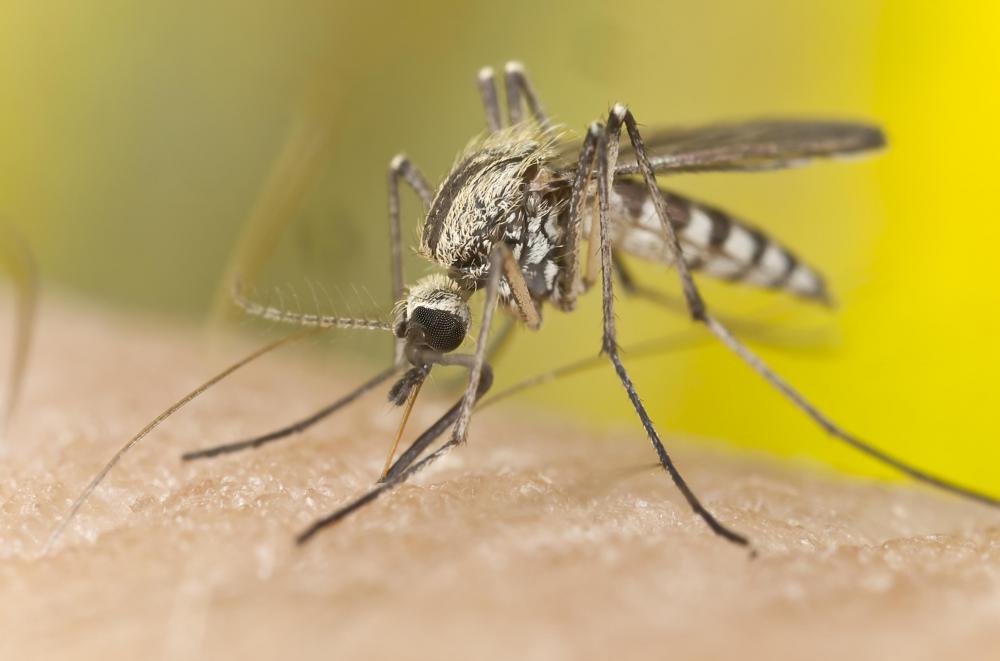At AllThingsNature, we're committed to delivering accurate, trustworthy information. Our expert-authored content is rigorously fact-checked and sourced from credible authorities. Discover how we uphold the highest standards in providing you with reliable knowledge.
What is an Azolla?
Azolla is a type of small aquatic fern that lives in symbiosis with microscopic blue-green algae called anabaena azollae. Found in tropical and temperate regions, these ferns float on the top of ponds or streams, clumping together to form green mats across the surface. Azolla is a genus which encompasses seven different species in the Salviria family, although some scientists place it in its own family, Azollaceae. The species filiculoides, mexicana, and caroliniana are found in the United States.
Commonly called mosquito fern or fairy moss, azolla is also sometimes called duckweed fern because of its penchant for growing near duckweed, a small aquatic flowering plant. The fern basically looks like floating moss at first glance. This fern does, however, have tiny overlapping bi-lobed leaves that seem almost scale-like and are attached to stems. Only the upper parts of the leaves contain chlorophyll, so only the tops are green. The roots of the azolla are thin and dangle underneath the foliage, directly in the water.

Azolla can reproduce asexually or sexually, by fragmentation or by spores. Though most ferns produce spores, the azolla is unusual because it produces two kinds of spores, male and female. The spores are first stored in structures on the underside of the leaves called sporocarps. Male sporocarps are larger, containing multiple spores rather than the single spore carried in the female sporocarps. The female spores are actually larger than the males, however, and are termed megaspores.

The algae, or cyanobacteria, anabaena lives in the ovoid cavities of the leaves of the azollas. This algae feeds on nitrogen in a process called nitrogen fixation. This type of symbiotic relationship is more often seen with legumes that have bacteria or algae living in the roots, creating lichen.
Azolla is extremely useful in China and other parts of Asia as nitrogen fertilizer for rice paddies. Called a "green manure," azolla is said to increase rice production by as much as 158 percent. It also allows the continued planting of crops in the same fields year after year, without the need to let a field rest.
In addition to fertilizer, azolla is also used in fish food and garden mulch and is naturally food for various types of water fowl, insects, and crustaceans. It was used to help purify water in the Biosphere II project, which simulated outer space greenhouse conditions. Azolla is also good for control of mosquitoes because its thick mat prevents the larvae from breaking through the water's surface.
Frequently Asked Questions
What exactly is Azolla?
Azolla is a genus of aquatic ferns often referred to as mosquito ferns, duckweed ferns, or fairy moss. It's a tiny plant that floats on the surface of water and is renowned for its symbiotic relationship with nitrogen-fixing cyanobacteria, which enables it to grow rapidly in nutrient-poor waters, making it an important ecological and agricultural plant.
Where can Azolla be found?
Azolla species are found worldwide, thriving in a variety of freshwater environments including ponds, lakes, and marshes. They prefer temperate to tropical climates and can often be seen forming dense mats on the surface of still or slow-moving bodies of water, which can sometimes be mistaken for algae due to their small size and green color.
How does Azolla benefit the ecosystem?
Azolla plays a significant role in its ecosystem by providing habitat for aquatic life, reducing water evaporation, and improving water quality. Its nitrogen-fixing ability enriches the water with nutrients, supporting the growth of other plants and the aquatic food web. Additionally, Azolla can sequester carbon, contributing to the mitigation of climate change.
Can Azolla be used in agriculture?
Yes, Azolla has been used as a biofertilizer in rice paddies for centuries, particularly in Asia. Its nitrogen-fixing properties enrich the soil, reducing the need for synthetic fertilizers. Azolla also acts as a weed suppressant and can be used as livestock feed due to its high protein content and rapid growth rate.
Is Azolla invasive?
While Azolla is beneficial in its native habitats, it can become invasive in areas where it is not naturally found. Its rapid growth can lead to the formation of thick mats that block sunlight and deplete oxygen levels in the water, harming native plants and animals. Management strategies are necessary to control its spread in non-native regions.
How does Azolla reproduce?
Azolla reproduces both sexually and asexually. Asexual reproduction occurs through fragmentation, where pieces of the plant break off and grow independently. Sexual reproduction involves the production of spores that are released into the water. The spores then germinate and grow into new plants, allowing Azolla to spread efficiently across bodies of water.
AS FEATURED ON:
AS FEATURED ON:












Discuss this Article
Post your comments